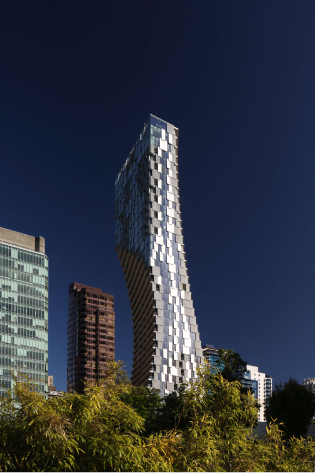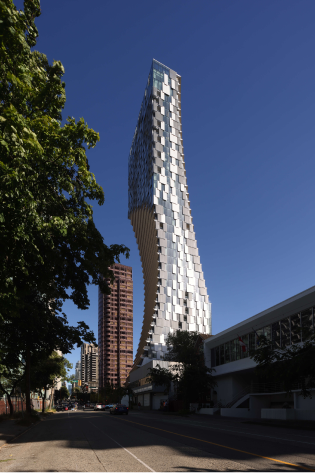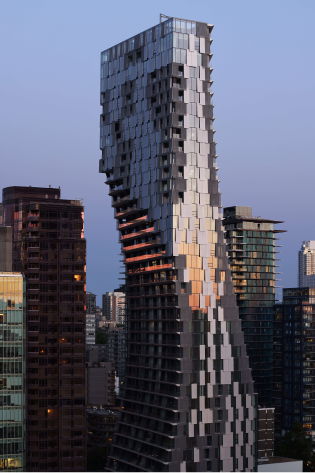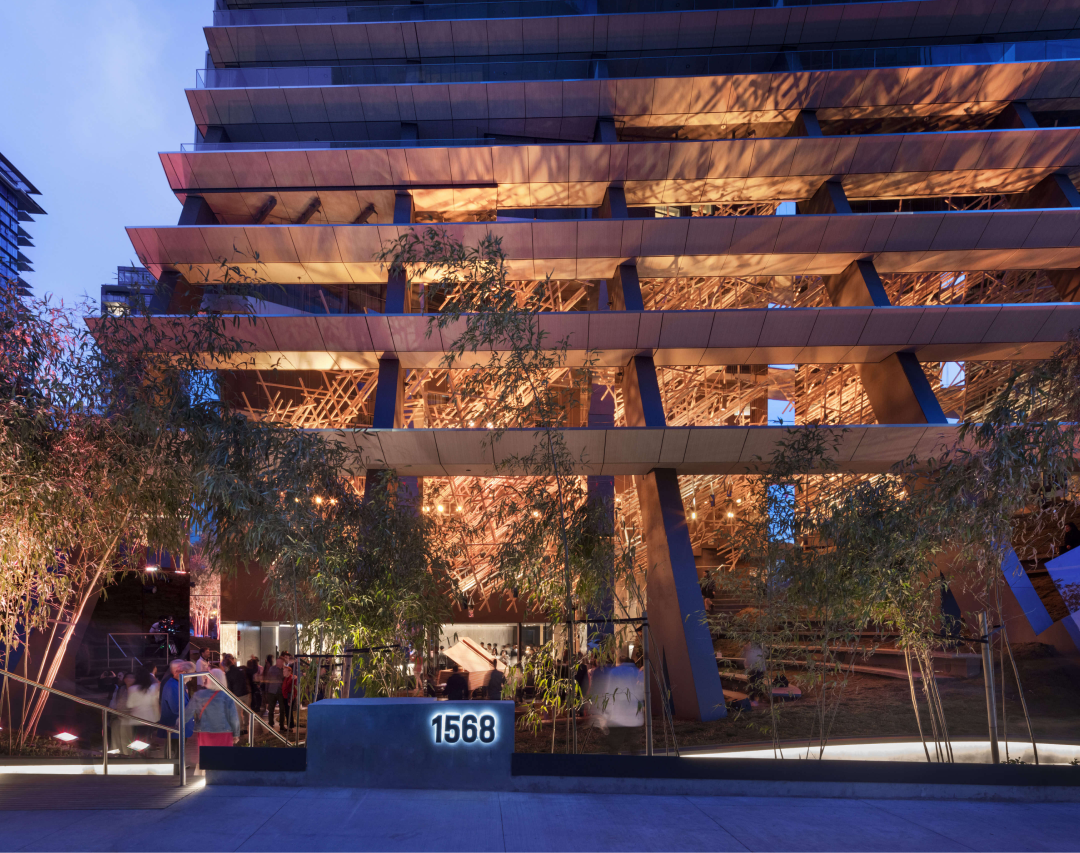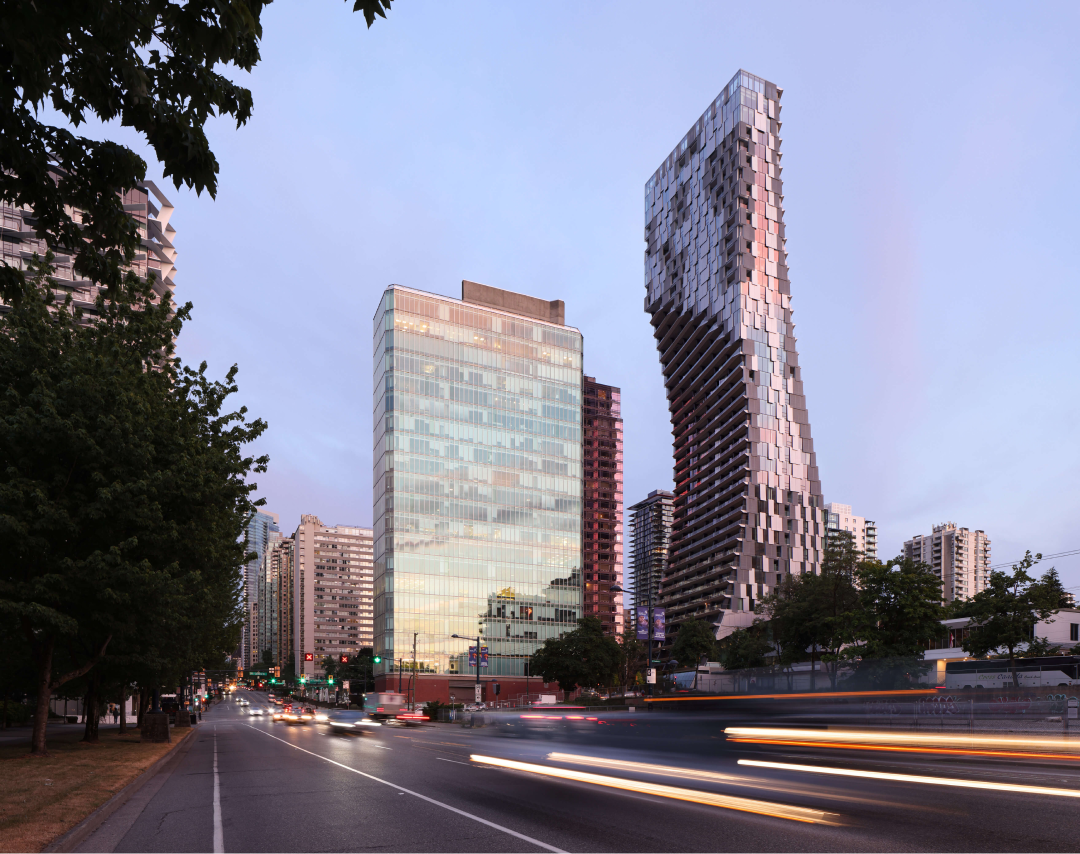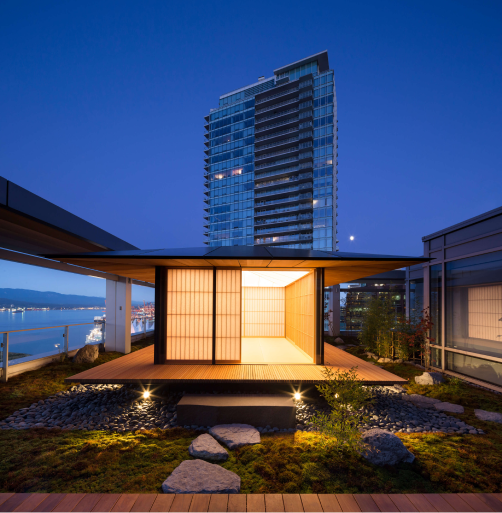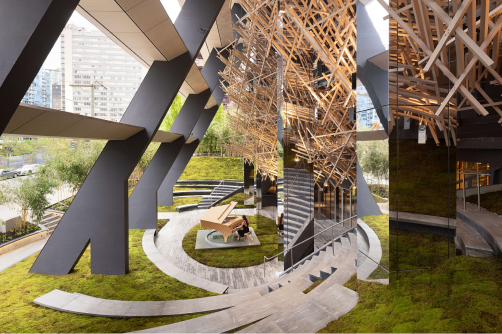Architect:
Kengo Kuma and Associates
Architecture
Designed by renowned Japanese architect Kengo Kuma, the Alberni project is shaped by its environment. The 43-storey tower is carved by two emphatic scoops that form deep balconies furnished in wood. In both instances, the carvings create semi-enclosures that strengthen their relations to the street and the views, connecting to its urban and geographic context while optimizing neighbouring views past the project.
Because of the way the otherwise orthogonal tower is carved, its silhouette constantly changes, creating illusionary profiles of arching cantilevers. The reality is far more structured as the carved deductions are diagonally symmetrical, with the lower portion helping to counterbalance the hanging volume above.
The tower meets the ground with two intersecting domes that embrace Alberni and Cardero Street. Under the arching structures, an extensive moss garden defines the entrance and flows upwards to the swimming pool above. In keeping with Japanese spatial traditions, the emphasis is on the atmosphere rather than the object: without drawing attention to a particular point laden with meaning, the void elicits a serenely visceral experience that can be shared by all.
Alberni by Kengo Kuma includes intricate design details in woodwork throughout and within the interior design of the residential tower. The project’s amenities include a Fazioli piano designed by Kengo Kuma, an expansive moss garden, a beautifully-designed fitness centre, a 25-metre length swimming pool, a temperature-controlled wine room, and a Kaiseki restaurant, inspired by the Michelin-starred restaurant, Waketokuyama, in Tokyo.
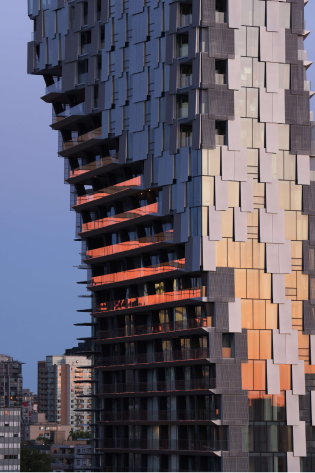
You could say that my aim is 'to recover the place'.
The place is a result of nature and time; this is the most important aspect.
I think my architecture is some kind of frame of nature.
With it, we can experience nature more deeply and more intimately.
Transparency is a characteristic of Japanese architecture;
I try to use light and natural materials to get a new kind of transparency.
— Kengo Kuma
